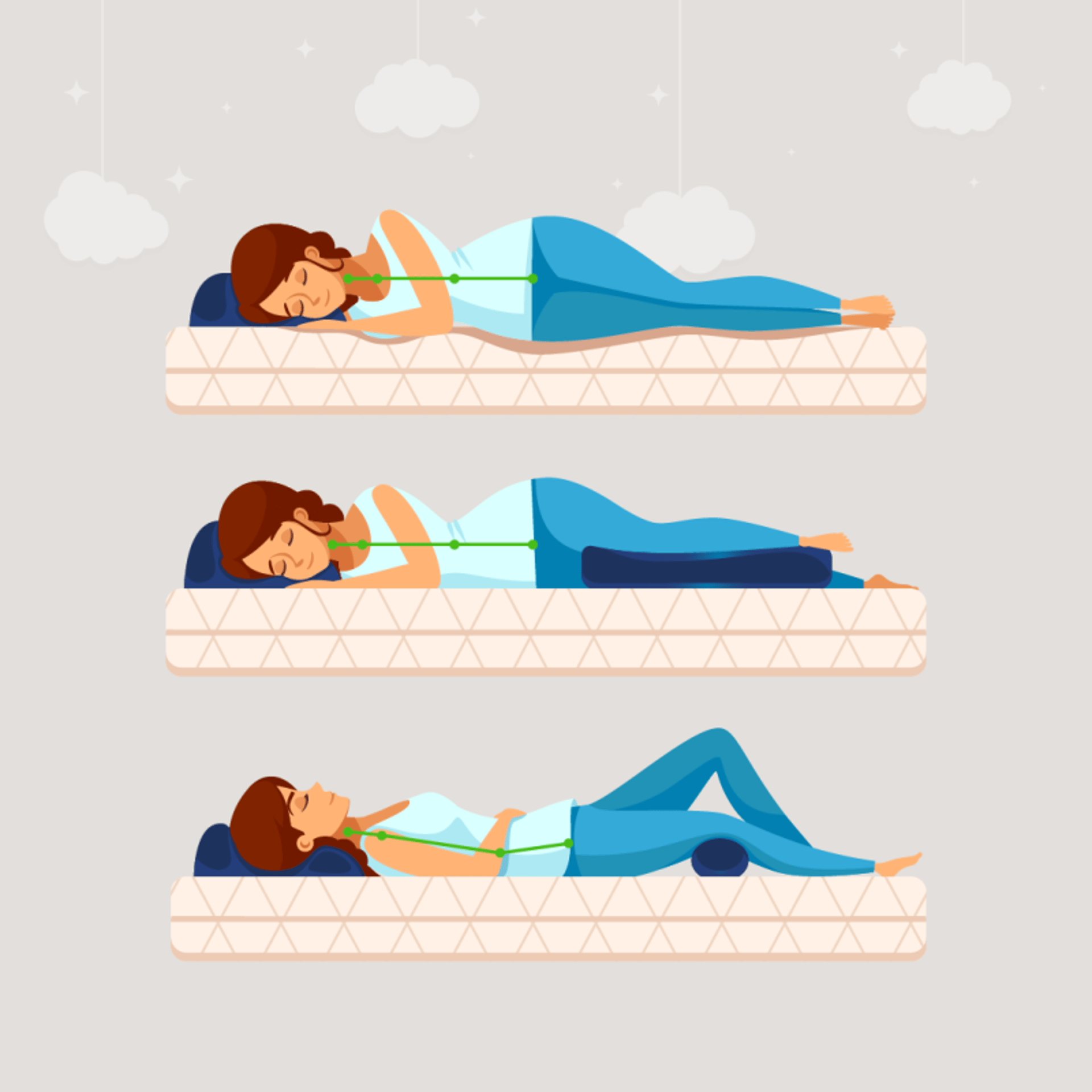
Discover the Best Sleep Positions for Health: Transform Your Sleep and Well-being
Getting quality sleep isn't just about how long you sleep - it's also about how you position your body during those crucial hours of rest. The right sleep position can significantly impact your overall health and well-being.
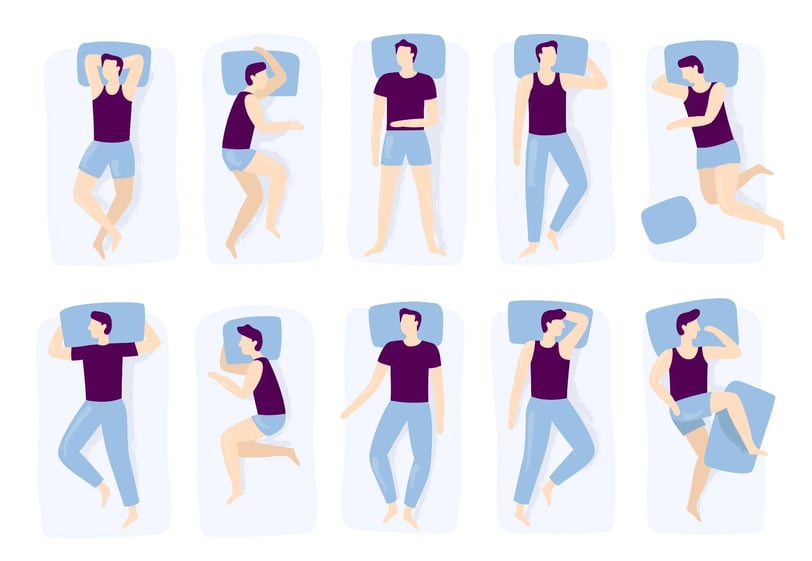

When it comes to maintaining overall health and wellness, the impact of sleep positions is often underestimated. Many people suffer from common health issues like back pain, neck stiffness, and even acid reflux due to poor sleeping positions. Understanding the best sleep positions for health can significantly improve your quality of sleep and contribute to better physical well-being.
In this comprehensive guide, you will learn about optimal sleep postures that promote proper body alignment during rest. By exploring healthy sleeping positions, we aim to provide you with insights into how ergonomic sleep positions can enhance your spine alignment during sleep, offering relief from persistent back pain.
Discover recommended sleeping positions that not only ensure comfortable rest but also support natural body alignment. Whether you're looking for the best sleeping position for lower back pain relief or seeking ways to prevent neck pain through proper pillow placement, this guide covers it all. We delve into beneficial sleeping postures that aid in reducing acid reflux and improving breathing at night.
For those experiencing shoulder discomfort or pregnant individuals seeking the most comfortable sleeping position during pregnancy, our tips on mattress support and pillow arrangement will be invaluable. By correcting your sleep posture with these strategies, you can achieve a restful night's slumber while safeguarding your long-term health.
Understanding the Importance of Sleep Positions
When it comes to maintaining optimal health, the significance of your sleeping position cannot be overstated. Your sleeping position affects various aspects of your health, including spinal alignment and posture. Poor alignment can lead to chronic back pain and discomfort, making it crucial to adopt a position that supports the natural curve of your spine.
Additionally, how you sleep impacts breathing quality and circulation. Certain positions can obstruct airways or impede blood flow, potentially leading to issues such as snoring or restless sleep. By choosing a position that promotes open airways and healthy circulation, you enhance both the quality of your rest and overall well-being.
Muscle tension and relaxation also hinge on how you sleep. An awkward sleeping posture may cause unnecessary strain on muscles, leading to tension and soreness upon waking. Conversely, a supportive position allows muscles to relax fully during the night.
Lastly, your digestive system function is influenced by your sleeping stance. For instance, lying on your left side has been shown to improve digestion by allowing gravity to aid in the movement of waste through the colon.
Understanding these connections underscores why it's vital not just how long you sleep but also how you do it. By being mindful of your sleeping position, you're taking an active step towards better health outcomes each day.
Optimal Sleep Positions and Their Benefits
1. Back Sleeping (Supine Position) - The Best Sleep Position
When it comes to optimizing your sleep quality, the position you choose can make all the difference. Back sleeping, or the supine position, is often heralded as one of the best choices for a restful night. One of its primary benefits is that it maintains a neutral spine alignment. By lying flat on your back with proper support from a pillow under your knees and head, you allow your spine to rest in its natural curve, reducing pressure points and alleviating back pain.
Moreover, if you're concerned about cosmetic issues like facial wrinkles, back sleeping might just be your skin's best friend. Unlike side or stomach sleeping positions that press and crease your face against the pillow, lying on your back keeps facial skin smooth and free from unnecessary friction.
For those who suffer from acid reflux, elevating the head while in this position can significantly minimize symptoms. Gravity works in your favor when you're slightly propped up; it helps prevent stomach acid from traveling upwards into the esophagus during sleep.
Whether you're dealing with persistent back pain, battling nightly bouts of acid reflux, or simply looking to maintain youthful skin without extra effort, adopting a supine sleeping posture could be a game-changer for you. Embrace this simple yet effective change to enhance not only how well you sleep but also how refreshed and rejuvenated you feel each morning.
2. Side Sleeping
Side sleeping is more than just a comfortable position—it's a gateway to numerous health benefits that can significantly enhance your quality of life. One of the most compelling advantages is its ability to promote better breathing. When you sleep on your side, your airways remain open, allowing for smoother airflow and reducing the risk of interrupted breathing patterns often associated with other positions.
For those plagued by snoring or sleep apnea symptoms, side sleeping can be transformative. This position helps keep your tongue and soft tissues from collapsing into the throat, which is a common cause of snoring and obstructive sleep apnea. By choosing to sleep on your side, you may experience fewer disruptions throughout the night and enjoy more restful slumber.
Moreover, side sleeping supports lymphatic drainage—a crucial process that removes toxins from the body and promotes overall health. This natural detoxification process works best when gravity assists in draining lymph fluids as you rest on your side.
Certain groups find particular relief in this sleeping posture. Pregnant individuals often benefit from side sleeping as it improves circulation to both mother and baby while reducing pressure on vital organs. Those with digestive issues also find comfort in this position since it can aid digestion by preventing acid reflux during the night.
Incorporating side sleeping into your nightly routine could be one of the simplest yet most effective changes for improving various aspects of health and well-being. Whether you're managing pregnancy discomforts or seeking relief from sleep apnea symptoms, turning to this tried-and-true position might just be the solution you've been dreaming about.
3. Fetal Position
When it comes to choosing the ideal sleeping position, the fetal position stands out as a natural and beneficial choice for many. As one of the most instinctive ways to rest, curling up on your side can offer a host of advantages that go beyond mere comfort.
One of the primary benefits of sleeping in the fetal position is its suitability for pregnancy. Expectant mothers often find relief in this posture, as it promotes better circulation and reduces pressure on vital organs, providing much-needed support to both mother and baby. This position aligns with the body's natural curves, offering gentle support that can alleviate common pregnancy discomforts.
Moreover, if you or your partner are troubled by snoring, adopting the fetal position might be a simple yet effective solution. By keeping airways open and reducing obstructions during sleep, this posture can significantly decrease snoring episodes, leading to quieter nights and more restful sleep for everyone involved.
For those experiencing lower back pain, the fetal position offers additional benefits. It helps maintain spinal alignment while relieving stress on sensitive areas by distributing body weight more evenly across the mattress. This can lead to reduced tension in muscles and joints upon waking.
In conclusion, whether you're pregnant or seeking relief from back pain or snoring issues, embracing the fetal position could be a game-changer for your nightly routine. Its natural alignment with our body's needs makes it an excellent choice for achieving restorative sleep night after night.
Worst Sleep Positions and Their Drawbacks
While understanding beneficial sleep positions is crucial, it's equally important to recognize potentially harmful sleeping postures that could negatively impact your health. Here are some positions you might want to reconsider:
Stomach sleeping, while comfortable for some, often leads to neck strain and lower back issues. This position forces your neck to rotate significantly and can misalign your spine, potentially causing chronic pain and discomfort over time.
Sleeping in an unsupported sitting position, such as in a chair or with too many pillows, can lead to poor spinal alignment and muscle tension. This position may contribute to both short-term discomfort and long-term postural problems.
The sprawled position, where limbs are spread widely across the bed, might feel relaxing but can create uneven pressure points and strain on joints. This position often lacks proper support for the natural curves of your spine.
The twisted position, where the lower body faces one direction while the upper body faces another, can create torsion in the spine and lead to muscle imbalances. This awkward alignment may result in morning stiffness and potential long-term spinal issues.
Position-Specific Health Considerations
When it comes to achieving a restful night's sleep, the position in which you sleep can play a crucial role, especially if you're dealing with specific health conditions. Tailoring your sleeping posture to address these issues not only enhances comfort but also promotes better health outcomes.
For those suffering from back pain, sleeping on your back with knee support is highly recommended. This position helps maintain the natural curve of your spine and reduces pressure on your lower back. Placing a pillow under your knees can further alleviate discomfort by aligning the spine properly.
If neck pain is troubling you, consider side sleeping with the right pillow height. This position keeps your spine aligned from head to hips, minimizing strain on your neck. Choosing a pillow that fills the space between your ear and shoulder ensures optimal support and comfort throughout the night.
Pregnant women often find relief by sleeping on their left side with supportive pillows. This position improves circulation to both mother and baby while reducing pressure on internal organs. A body pillow or strategically placed cushions can provide additional support for the abdomen and legs.
For individuals struggling with acid reflux, elevated back sleeping offers significant benefits. By slightly raising the upper body using an adjustable bed or wedge pillow, gravity helps prevent stomach acid from rising into the esophagus, thereby reducing symptoms during sleep.
By adopting these position-specific strategies tailored to individual health needs, you can significantly improve sleep quality and overall well-being. Prioritizing how you rest at night is just as important as what you do during waking hours when it comes to maintaining good health.
Essential Equipment for Optimal Sleep Positioning
Achieving a restful night's sleep is not just about the hours you spend in bed; it's also about the quality of your sleep environment. To ensure optimal sleep positioning, investing in the right equipment is crucial. Let's delve into why these essentials can transform your nightly rest.
First and foremost, the mattress you choose plays a pivotal role. A medium-firm mattress provides the ideal balance of comfort and support, promoting proper spinal alignment. This level of firmness helps distribute body weight evenly and reduces pressure points, which can alleviate discomfort and prevent back pain over time.
Next on the list are pillows, which are more than just headrests; they are vital for maintaining neck alignment. The right pillow height and support can prevent neck strain by keeping your spine naturally aligned with your head and shoulders. Whether you're a side sleeper or prefer lying on your back, selecting pillows that cater to your sleeping position can make all the difference.
Lastly, don't overlook support accessories like knee pillows, body pillows, or wedge pillows. These tools offer additional support where needed—whether it's between your knees to maintain hip alignment or under your legs to relieve lower back tension. By incorporating these accessories into your sleep routine, you create a customized cocoon of comfort that addresses specific needs and enhances overall sleep quality.
In conclusion, equipping yourself with the right mattress, pillows, and support accessories is not just an investment in furniture but an investment in healthful rest. Prioritizing these elements will lead to better sleep posture and ultimately improve how you feel each day upon waking up refreshed and revitalized.
Frequently Asked Questions (FAQs)
Q1: What is the healthiest sleeping position?
A: Back sleeping is generally considered the healthiest position as it maintains neutral spine alignment and distributes body weight evenly. However, the best position varies based on individual health conditions and comfort preferences.
Q2: How can I train myself to sleep in a better position?
A: Start by using supportive pillows to maintain the new position, gradually adjust over 2-3 weeks, and create a consistent bedtime routine. Use physical reminders like placing pillows to prevent rolling into unwanted positions.
Q3: Which sleep position is best for reducing back pain?
A: Back sleeping with a pillow under the knees is optimal for back pain. Side sleeping with a pillow between the knees is also beneficial. Avoid stomach sleeping as it can increase spine stress.
Q4: Should I change my sleeping position if I snore?
A: Yes, side sleeping is recommended for snoring as it keeps airways more open. Elevated back sleeping can also help. Avoid flat back sleeping if you snore heavily.
Q5: What's the best sleeping position during pregnancy?
A: Left side sleeping is recommended during pregnancy as it improves blood flow to the fetus and reduces pressure on major blood vessels. Use supportive pillows for comfort.
Q6: How long does it take to adjust to a new sleep position?
A: On average, it takes 2-4 weeks to fully adjust to a new sleep position. During this adaptation period, you may experience some discomfort. Stay consistent with the new position and use supportive pillows to make the transition easier. Some people may adapt more quickly, while others might need up to 6 weeks.
Q7: Can changing sleep positions help with chronic pain?
A: Yes, modifying sleep positions can significantly help manage chronic pain. Different positions can relieve pressure on specific areas and improve alignment. For example, side sleeping with a pillow between the knees can help with hip pain, while back sleeping with elevated knees might reduce lower back pain. However, it's important to consult with a healthcare provider for personalized recommendations.
Q8: What's the best position for combination sleepers?
A: Combination sleepers should focus on maintaining neutral spine alignment in all positions. Start on your side or back, as these are generally healthier positions, and use supportive pillows that can adapt to movement. Avoid positions that might strain your neck or back when switching positions during the night. Consider using a medium-firm mattress that accommodates different sleep positions.
Q9: How do I maintain proper alignment while sleeping?
A: To maintain proper alignment, ensure your ears, shoulders, and hips are in line when side sleeping. For back sleeping, keep your head level with your spine and use a pillow under your knees. Use appropriately sized pillows to fill natural gaps and support your body's curves. Regularly check that your mattress provides adequate support and replace it when necessary.
Q10: Should I use different positions for different health conditions?
A: Yes, different health conditions often benefit from specific sleep positions. For acid reflux, elevated back sleeping is recommended. Side sleeping helps with sleep apnea and snoring. People with arthritis might need to adjust positions based on their affected joints. Always consult healthcare professionals for position recommendations specific to your condition.
Expert Tips for Better Sleep Positioning
Achieving a restful night's sleep often hinges on more than just the number of hours you spend in bed; it's about how you position yourself during those hours. To optimize your sleep posture, maintaining neutral spine alignment is crucial, regardless of whether you're a back, side, or stomach sleeper. This alignment ensures that your muscles and ligaments can relax and recover while minimizing discomfort.
Using appropriate pillow support is another essential factor in enhancing your sleep quality. The right pillow can make all the difference by supporting your chosen position and keeping your neck aligned with the rest of your spine. For instance, side sleepers may benefit from a thicker pillow to fill the space between their head and shoulder, while back sleepers might prefer something thinner to prevent their head from tilting forward.
If you have specific health conditions such as sleep apnea or acid reflux, adjusting your sleep position accordingly can significantly improve symptoms. Elevating the head slightly can alleviate breathing issues for those with apnea, while sleeping on the left side may reduce acid reflux episodes.
Lastly, if you're considering transitioning to a new sleep position for better health outcomes or comfort, do so gradually. Your body needs time to adapt to new positions without causing additional strain or discomfort. By integrating these expert tips into your nightly routine, you'll be well on your way to achieving better rest and overall well-being.
Remember, while these guidelines are helpful, individual comfort and health conditions should guide your choice of sleep position. Consult with healthcare professionals for personalized advice, especially if you have specific health concerns.
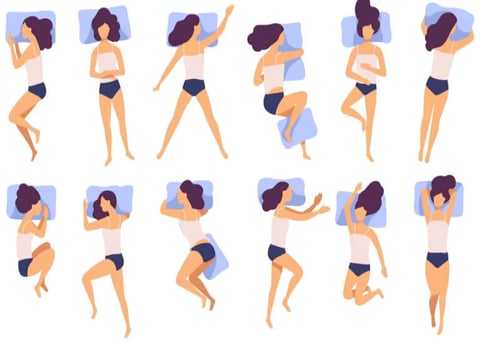

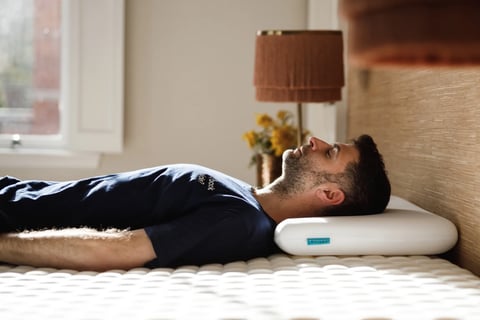

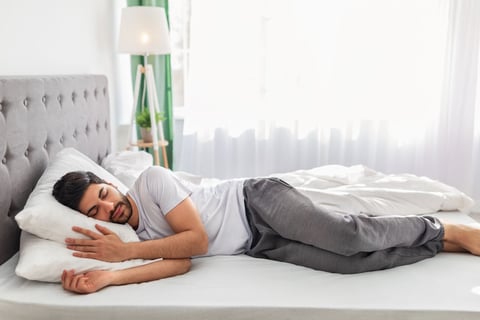



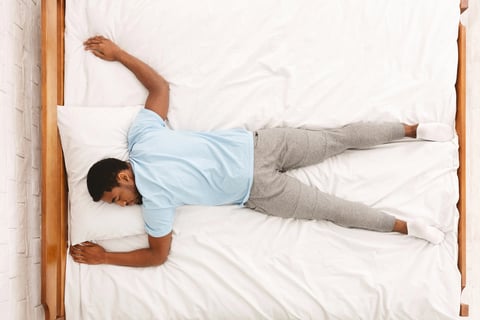



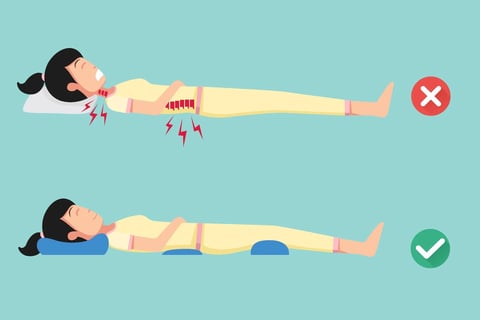


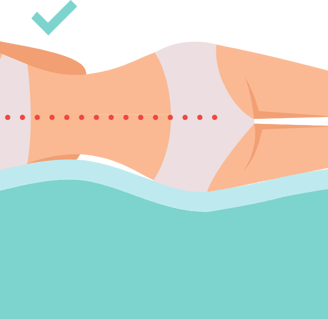
Video
Discover tips for sleep, detox, and mindfulness.
© 2024. All rights reserved.
